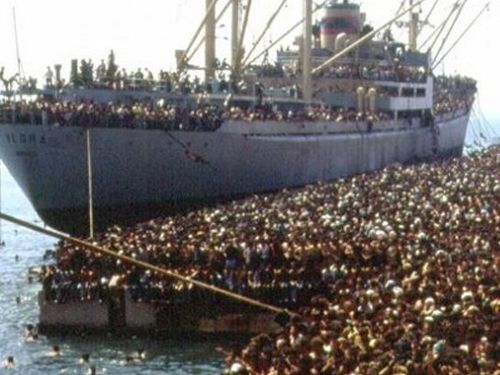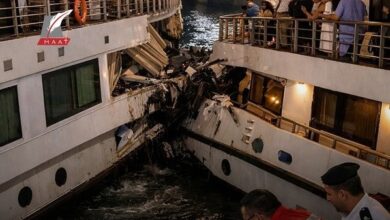
VENICE — Late Italian screenwriter Cesare Zavattini, a main contributor to the neorealist movement, once said: “in the archives are [sleeping] images that are eager to come to life.” His prophecy comes to life in “La Nave Dolce” (The Human Cargo), the latest documentary by Italian director Daniele Vicari, screened in the Proiezioni Speciali section of the 69th Venice International Film Festival.
Long before the rise of the Mediterranean migrations to Italian waves, before floating detention centers, before the Berlusconi-Qadhafi billion euro migrant agreement, on 8 August 1991 the Italian coastal city of Bari learned staggering news: The Albanian cargo ship "Vlora" was headed toward its shores, loaded with 20,000 people who had hijacked the ship and decided they wanted to migrate to Italy.
“La Nave Dolce” is literally translated as “The Sweet Ship,” a tongue-in-cheek reference to its original cargo of sugar. The 90-minute documentary is based on thoroughly filmed archival material, covering every step of the ship’s journey, from the collectively energetic boarding of the masses and flooding of the ship in the Albanian port, to the astonishing, dramatic footage of the flock of people crossing the Adriatic Sea with helicopters hovering over the ship, stirring excited reactions from the passengers, screaming “Italia! Italia!” and waving the victory sign. In that scene, one of the Italian commentators interviewed in the film says, “I did not understand the victory sign, what have they won?” signaling the downward spiral of the story, the Italian government’s reaction.
The documentary runs a catchy electro-rock soundtrack alongside the grainy archival material, sometimes to the point of oversaturation. Aside from the graininess comes the spotless interviews, shot against a white background, almost glamorizing the various boarders of Vlora, with people telling — in various Italian accents — their personal versions of the story. It also features Italian officials involved in the so-called “rescue” operation.
Vicari explains in his director's statement how the state of collective astonishment at the exceptional event allowed for photographers and filmmakers to document everything freely. Authorities were so taken by surprise, he says, that they were not aware that embedded with in such images was testimony for the future.
The documentary caters this retrospective vision of Italian authorities’ erratic reactions toward migrants. The rescue plan for the ship rapidly shifted to a callous imprisonment of thousands of anguished Albanians in the city stadium for days, until the decision was made to deport them back to Albania — at least most of them.
As explained by Robert Budina — one of those on board the ship, now a director in Italy — the fall of the Berlin Wall injected a surge of liberation and will into Albanians, leading to the collective decision to find a better life, even if it involved finding it in a risky, non-conformist way. On the other hand, the same event of the wall falling created an opposite, defensive surge in neighboring Italy, deemphasizing human rights and giving its interior ministry an upper hand in dealing with any hint of "change."
The story is an eye-opener for the Italian target audience, but it is relevant beyond that one boat voyage to Bari.




